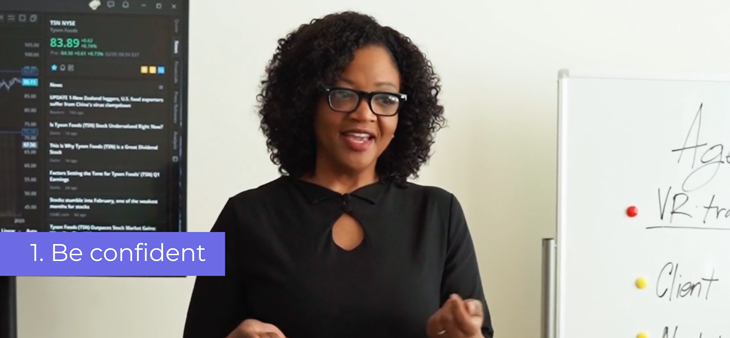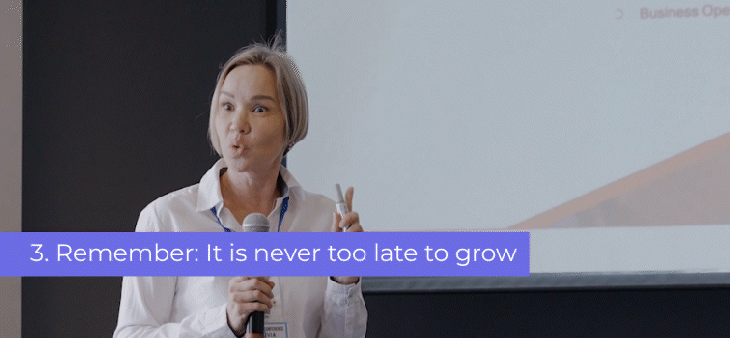Women, Work & the Wonders of Diversity: Actionable Advice for Improving Inclusion
Research shows that companies with a higher percentage of women executives perform better than those with male-dominated leadership teams. It is no wonder, then, that progressive companies are doubling down on their DEIB initiatives. But are they going about it the right way? Agatha Appleton-Sas, Digital Inclusion Specialist and International Consultant for United Nations Women, and Jessica Wilson, Director of Customer Success at StarMeUp, share actionable advice for companies ready to improve gender diversity in the workplace, and tips for the women looking to lead them to success.
The data on gender diversity is unsettling. Women are still dramatically underrepresented in the workplace, and nowhere is this more true than in senior leadership roles. Research by the United Nations Entity for Gender Equality and the Empowerment of Women found that the number of women CEOs range from zero to five percent–revealing just how limited the number of women in decision-making positions really is.
Considering that companies with gender diversity in leadership benefit from enhanced consumer insight, improved performance, and increased profitability, it is surprising that more organizations are not prioritizing this issue. And while 97% of HR leaders say their organization has made changes to strengthen diversity, equity, inclusion, and belonging (DEIB), it is telling to learn that only 37% of employees strongly agree that this is the case.
While 97% of HR leaders say their organization has made changes to strengthen diversity, equity, inclusion, and belonging (DEIB), it is telling to learn that only 37% of employees strongly agree that this is the case.
– Harvard Business Review
According to McKinsey, achieving gender equality is ‘all but impossible’ unless two pipeline problems are addressed: the ‘broken rung’ that prevents women from taking the first step up to management, and the high rates of attrition of women in leadership roles. It is problematic enough that for every 100 men who are promoted from entry-level roles to manager positions, only 87 women are promoted, but this is exacerbated by the fact that for every woman at the director level who gets promoted, two women directors are choosing to leave their company. It is no wonder, then, that only one in four C-suite leaders is a woman.
The root of the issue, however, goes much deeper than better or worse decision-making, or higher or lower retention rates. When women don’t see other women in leadership roles, companies are then faced with a problem that has the potential to be more damaging to gender equality efforts than the broken rung and attrition combined: a deep-rooted lack of self-belief in young women.
When women don’t see other women in leadership roles, companies are then faced with a problem that has the potential to be more damaging to gender equality efforts than the broken rung and attrition combined: a deep-rooted lack of self-belief in young women.
– StarMeUp
Seeing how difficult it is for other women to move into leadership roles, and how quickly they are compelled out of them, why should young women even bother trying? It seems that moving up the corporate ladder only means more burnout, more microaggressions, and less psychological safety. Luckily, more than two-thirds of women under 30 report wanting to be senior leaders, so companies should review their DEIB strategies to ensure that those women have the tools they need to move into leadership roles.
To raise awareness about the importance of DEIB in the workplace, StarMeUp teamed up with Agatha Appleton-Sas, Digital Inclusion Specialist and International Consultant for United Nations Women. Appleton-Sas is acutely aware of the challenges businesses face when trying to create a more diverse and inclusive workforce. However, she strongly believes that with the right mindset, leaders can turn these challenges into opportunities. As part of StarMeUp’s Cultural Panel for International Women’s Month, Appleton-Sas shared three strategies businesses can use to attract and retain more women in leadership roles–especially in male-dominated industries like tech.
Three Ways to Attract and Retain Women in Leadership Roles

“Make sure there is an opportunity for sponsorship within your business or organization,” says Appleton-Sas. “Promoting mentorship through education, training, and professional development for women is very important, as it helps women develop the skills and confidence needed to succeed in leadership roles, but sponsorship actually gives women a seat at the table. While mentors advise, sponsors act. Sponsors create an opportunity for women which they wouldn’t have had on their own, and therefore sponsorship can help address the gender gap in leadership.”

“Without genuine support from current leaders, diversity and inclusion efforts may struggle to gain traction,” says Appleton-Sas. “To overcome this challenge, businesses can prioritize diversity and inclusion at the highest levels of the organization and hold leaders accountable for progress. This can include setting diversity and inclusion goals as part of performance evaluations, providing regular updates on progress to senior leadership, and tying executive compensation to progress on diversity in the workplace.”

“Companies should monitor and measure their progress towards gender diversity and equality,” says Appleton-Sas. “Collecting data on the gender composition of their workforce, pay and promotion rates, and turnover rates can help companies identify where they need to improve, and adjust their strategies accordingly. Remember: What is measured is visible, and only what is visible can be changed.”
Companies that focus their efforts on creating opportunities for women through sponsorship, setting clear DEIB goals, holding leaders accountable, and using data to measure progress can start creating a company culture where every voice is valued, every opinion is respected, and every person is empowered.
While reaching full gender parity may take the 132 years estimated by the World Economic Forum, companies can start creating an inclusive workplace culture today–and it is imperative that they do so. Every day that goes by without progress in this area results in one more woman being excluded from the leadership team, and one more woman who, seeing that those who make it to the top tend to be males, reinforces her belief that she is not fit to lead.
Jessica Wilson, Director of Customer Success at StarMeUp, is a woman who currently holds a leadership role in an industry where women are a minority. But her possibilities for growth were not always evident to her. “Working in male-dominated business environments really affected my confidence at the beginning of my career,” she says. “Luckily, I had an inspiring leader who saw my potential and empowered me to find my voice. Her transparency and kindness made it easy for me to move past my insecurities and accomplish things I had not thought possible.” For women looking to thrive in today’s world, Wilson shares three pieces of advice.
Leaning into Leadership: Three Tips for Aspiring Decision-Makers
- 1.Be confidente

“Stand up for yourself and be persistent in situations where you feel like you are being overlooked or pushed aside,” says Wilson. “Match that confidence with the humility to take constructive feedback and the flexibility to spin it into gold, and you will be sure to make an impact.”
- 2. Adopt an Always Be Learning Mentalily

“Learn as much as you can from people you admire and look up to,” says Wilson. “Ask plenty of questions and seek out opportunities to learn. Take those lessons and adapt them to your personal style and approach.”
- 3. Remember: It is never too late to grow

“Have faith that you are capable of moving into a leadership role, whether you are starting out or are well into your career,” says Wilson. “It is all too easy to feel like you can’t move up, but if you push yourself out of your comfort zone, you can get there–and you will get there! Have faith in yourself, seek out mentorship, and network, network, network!”
The business case for DEIB is evident and compelling, but companies are still struggling to build an actionable roadmap from the research. When they talk about plans for improving diversity in the workplace, it often revolves more around rhetoric than action. That’s where technology can be leveraged. Talent experience platforms that encourage recognition, enable listening and facilitate feedback are an effective way of shining a light on individuals and groups that have traditionally been sidelined. True inclusion can only happen when blind spots have been identified and data-driven decisions are made. Companies looking to reap the rewards of gender parity can take the first step today: harnessing the power of technology to transform good intentions into intentional inclusion.
Looking to put your leadership development aspirations into action?
Discover how StarMeUp can help you create a culture that puts people first.
Schedule a demoLearn more about harnessing the power of culture and technology in your company by heading to our website and following us on Instagram, Facebook, LinkedIn and Twitter.